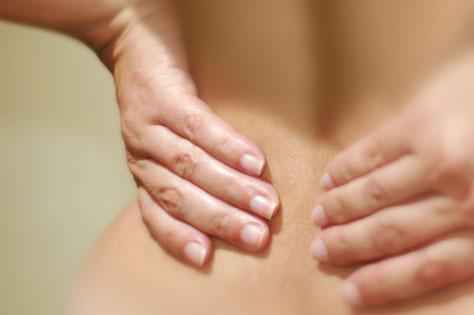The research, commissioned by the Chiropractors’ Association of Australia (Victoria), also found that 90% of women experience back and neck pain during pregnancy.
And little wonder: according to the survey, new mums are spending up to 6 hours per day performing activities that are putting strain on their back and neck, with the majority admitting they rarely consider their posture while doing so.
The top 3 most painful activities, causing back and neck pain for over 50% of new mums, were:
- Holding child on their hip
- Breast, or bottle, feeding
- Lifting up and putting down children, either whilst playing or getting in and out of cots, highchairs etc.
The average mother spends 1.5 hours per day holding her child on her hip, 2 hours breastfeeding, and 1 hour a day changing nappies, another cause of back and neck strain.
“With the average 2 year old weighing close to 12 kilos, it’s not surprising that the vast majority of Australian mothers experience pain,” says Dr Helen Alevaki, President of the Chiropractors’ Association of Australia (Victoria).
“To hold a child on the same hip for hours every day can be very stressful to the spine, affecting the natural curvature and potentially causing permanent damage.”
Dr Alevaki urges pregnant women and new mums to listen and care for their body.
“As a mother of young children, I know that being a mum is stressful – physically and emotionally. It’s common for mums to become overwhelmed with children and as a result, completely ignore their own health. But in fact, looking after their own health is one of the best things they can do for their family.”
Dr Alevaki’s top tips for mums-to-be:
• Don't try to sit up straight from a lying position - bend your knees, turn to for side and push yourself up with your arms.
• Avoid standing with your hands on your hips and pushing your tummy forward
• Let others lift heavy items for you, including other children
• Avoid twisting your spine on top of your pelvis; instead try moving your whole body with your feet first.
• Keep your pelvic floor strong with regular exercises, and gently stretch your body everyday
• Have your spine checked regularly by a chiropractor - many women just learn to accept the strain and discomforts of pregnancy, however gentle chiropractic adjustments can help not only in terms of pain management, but other issues like heartburn, constipation, and even labour. There is evidence to suggest that chiropractic adjustments while pregnant reduce the need for painkillers and overall labour time.
Dr Alevaki’s top tips for new mums:
• Daily gentle and rehabilitative exercises for weakened spinal and abdominal muscles after giving birth are very important. Strong core muscles are essential for protecting the back and neck of new mums.
• Invest in a change table to change your baby's nappy - not on the floor or on the bed. Make sure it is the correct height so that you have to bend/hunch over as little as possible.
• Always remember to take care when lifting and playing with your child - engage your core muscles, and bend from the knees as with lifting any heavy object.
• The weight of the breast increases with pregnancy as the milk comes in - a well-fitting and supportive bra is essential for minimising strain and pain, especially as hormonal changes during this time can soften ligaments and make injury more likely.
• It is important to maintain good posture while breast (or bottle) feeding - women do this for hours every day in the early stages, and sometimes hold terrible, painful postures because her baby is well attached. Good attachment also involves good posture for the mother, so use cushions and pillows to lift the baby as high as is needed.
• Try not to get stuck doing things "one-sided" - ie. Carrying your child always on your left hip. This causes imbalanced stress on the spine, so always switch sides.
Maintain a healthy spine - prevention is always better than cure, and a regular visit to the chiropractor can go along way in helping you survive the blues associated with "mother's back".
For further information visit: www.caavic.asn.au

















__small.png)










